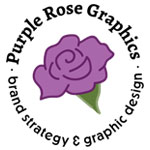Did you know that Halloween is but one of the holidays celebrated at the end of October? There are actually many festivals held at the end of October, but the two most famous ones are Halloween and Día De Los Muertos
While the holidays share some minor similarities, they’re really different. This is why I really want to look at them from an advertising and marketing lens.
Each holiday has a different origin story and has morphed and changed over the years. If you want to read more on these origin stories, I found great articles for Halloween and Dia De Los Muertos online.
Brands Stay True to Their Values and Origin Story Have Better Lasting Power
Halloween whose origins are in Europe where the fall season meant an increase in night, cold weather, and often death has a much darker vibe. The holiday was meant to be somber yet fun and eventually morphed into the fright-fest we know today.
In contrast, Día De Los Muertos is held all over Latin America and has more of a festive upbeat vibe. This holiday is meant to be a time to celebrate family (and maybe poke a little fun at death too). Traditionally families will gather, and set up altars or ofrendas with images of family and friends who have passed on along with foods, special belongings of their deceased loved ones, flowers, and other special or ritual objects. Unlike Halloween, nothing here is meant to be frightening, you are meant to feel connected to your ancestors and your community.
Each of these holidays stays true to their values, traditions, and their origin stories. Even though those stories might have changed or morphed through the ages, you can still see pieces of them there. When a company consistently lets their values and traditions shine through in their marketing materials, they create trust with their customers. Trust is one of the main building blocks for a strong business.
Visual Marketing pieces need a focused message and an audience first!
Advertising-wise, Halloween has two main audiences, people who like horror and enjoy the adrenaline rush of fear and families who want to enjoy the community aspect of trick or treating. Every message created for the holiday is going to speak to one of these audiences.
Día De Los Muertos is a little different. This holiday is an integral part of a community, and its audience is much wider than those of Halloween. Even with this wider audience, they have a focused messaged.
A marketing campaign needs an audience; Someone it’s talking to. It’s okay if you have a wider audience, but you still need a focused messaged. There has to be some kind of focus whether it’s a specific audience or specific message. It’s really hard to design for “everyone” and “everything”. The point of a campaign is to sell something to someone.
The Visuals Create the Vibe and People Notice Emotions
Visuals meaning photos, drawings, fonts, and colors set the tone and create the vibe. They bring forth emotions and catch the attention of the intended audience.
For Halloween, the main themes are going to include things that induce fear such as blood and gore or it’s going to be more family-oriented candy and costumes. For the ads that aim to induce fear, we’re going to see fonts that are Victorian in nature with curls and points in the letters. We will also fonts that give the impression of oozing or dripping a liquid or are a rough hand-drawn appearance as if someone were scratching the letters into a hard surface. For the more family-friendly ads, we’ll see fonts that are dripping or oozing, along with hand-drawn fonts that are more rounded to give them a fun child-like feel. We see a limited color palette with a lot of greys, black, purple, orange, and neon green.
In contrast, the main themes for Día De Los Muertos are decorated skulls and skeletons, a humorous depiction of the goddess of the underworld called La Calavera Catrina, candles, lanterns, and marigolds. These ads feature colors that are bright, but not really limited to certain colors. Although, I see a lot of bright yellows, oranges, reds, blues, and blacks. Fonts can run from Medieval styled fonts meant to imitate the careful calligraphy done during the era (like Blackletter or Chancery) to more modern scripts and sans serif fonts.
So to put all this together, a great visual marketing campaign needs more than just great visuals. It needs an audience, a focused message, to stay true to the company’s origin story and values. Then, we can talk about using colors, fonts, and images to create the emotional appeal in the designs that will make the intended audience pick up their piece (or stop scrolling).
If you’re ready to see how graphic design can massively uplevel your impact and income, drop me an email & I’ll hook you up with a FREE 1:1 Branding & Design Strategy Session where we’ll chat about your business, your goals, give you tips on how design can get you where you want to be and see if working together makes sense!
